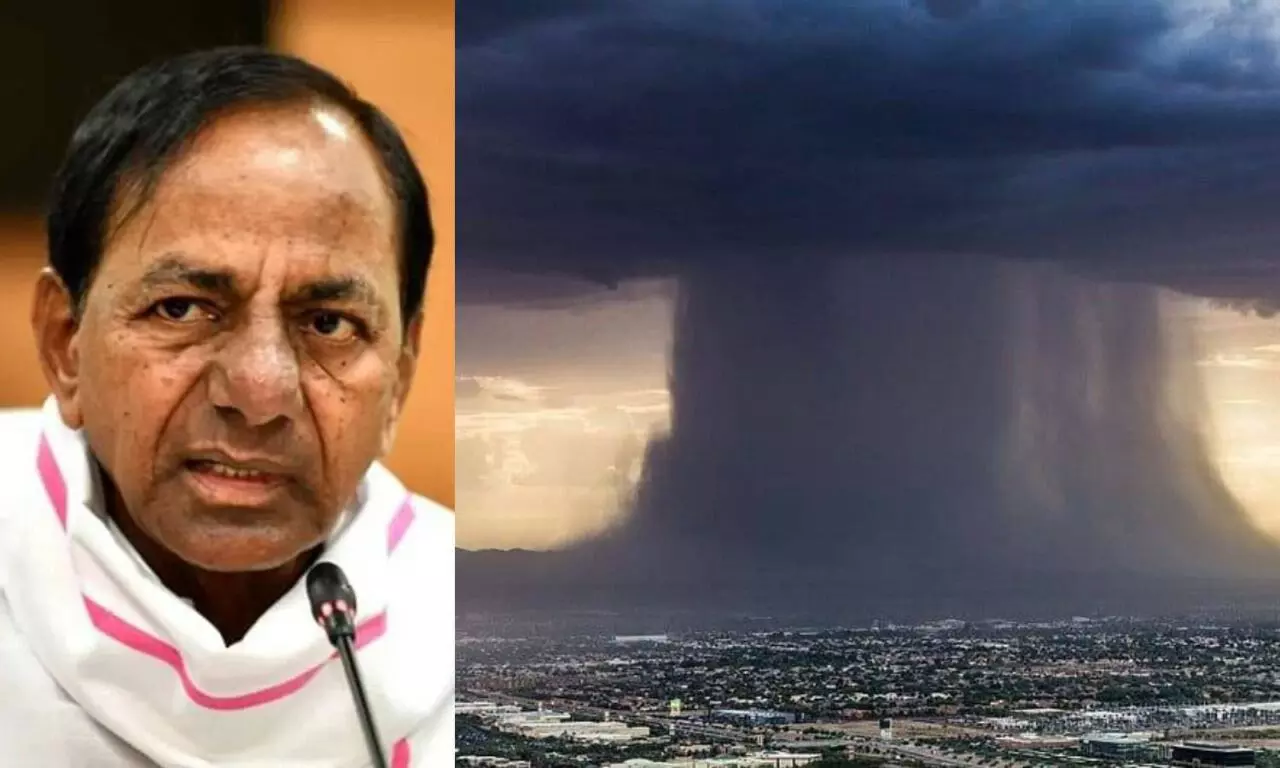Not 'foreign hand', not cloudburst but heavy rains behind Godavari floods, say experts
Chief Minister K. Chandrashekar Rao kicked a storm by referring to a “foreign hand and cloudburst” but experts say that that is not the case
By Kaniza Garari
Hyderabad: The second-highest flood touching 71.20 feet in the Godavari river at Bhadrachalam in the month of July 2022 is not due to cloudbursts. Weather experts said that it is due to very heavy rains and a low-pressure zone formed in central India. This led to heavy rains in the catchment areas of Odisha, Maharashtra, Telangana and Andhra Pradesh causing flooding of the Godavari river.
In Telangana, 52 villages are submerged and 8,984 villagers evacuated. In Andhra Pradesh, 191 villages were inundated with rain waters and 76,775 villagers evacuated. Mahesh Palawat, the chief meteorologist at Skymet Weather Services Pvt. Ltd, explains, "There were very heavy rains in the region and also in the catchment areas which led to flooding. There has not been any cloudburst in the Godavari region in July 2022."
Chief Minister K. Chandrashekar Rao kicked a storm by referring to a "foreign hand and cloudburst" but experts say that that is not the case. Other weather experts said the data of the maximum rain received in a particular area for one hour is a better way to judge the situation.
Since the radar of the Indian Meteorological Department in Hyderabad has not been working properly there have been a lot of challenges faced by the department and private weather forecasters in forecasting the heavy rains. But all weather experts across Telangana and Andhra Pradesh state that the flooding was due to heavy rains. With the flooding and weather situation being politicised, weather experts do not want to be embroiled in a political tug-of-war stating that data and science must be utilised to back the claims.
What is a cloudburst?
Cloudburst is extreme amounts of rain, exceeding 100 mm or 10 cm per hour, over a geographical location of 20 to 30 square kilometers. Cloudbursts are common in the Indian subcontinent and were earlier known only in the Himalayan regions. But with the loss of life and property due to this phenomenon, researchers have tabulated data from India and published it in the journal Science Direct in 2017.
The hourly rainfall data of 126 weather stations in India from 1969 to 2015 were studied and it showed that there were 28 cloudbursts phenomena recorded. There are also mini cloudbursts of less than 5 cm rains recorded in the month of July in the Western Ghats and foothills of the Himalayas during this time period.
Cloudbursts can occur anywhere
Weather experts state that cloudbursts are common in the Indian subcontinent. It is also applicable to tropical countries. It is difficult to predict a cloudburst as only heavy rains can be predicted. After a cloudburst occurs, there are meteorological calculations that determine it. In the present case of July 2022 rains in TS, Maharashtra, Andhra Pradesh, and Odisha, weather experts state that it was a low-pressure zone.
What is cloud seeding?
Cloud seeding is a weather modification technique that improves the ability to produce rain by introducing tiny nuclei into subfreezing clouds. It is also known as man-made precipitation enhancement or artificial rains.
Can cloud seeding cause cloudbursts?
No, said weather experts.